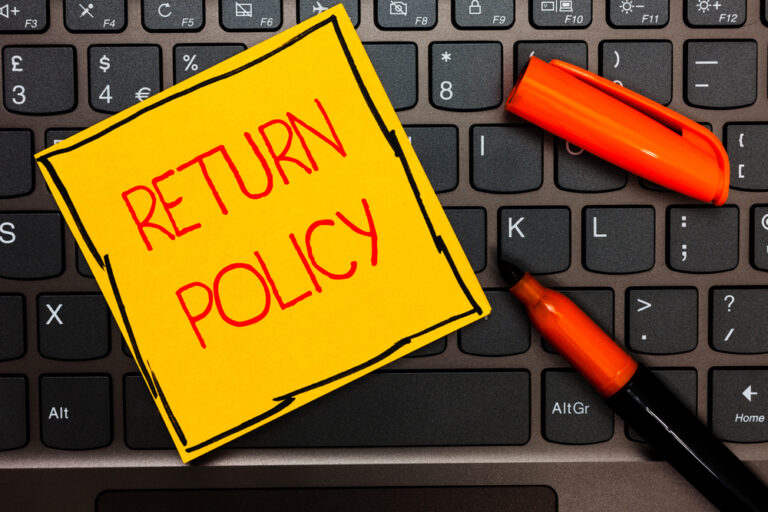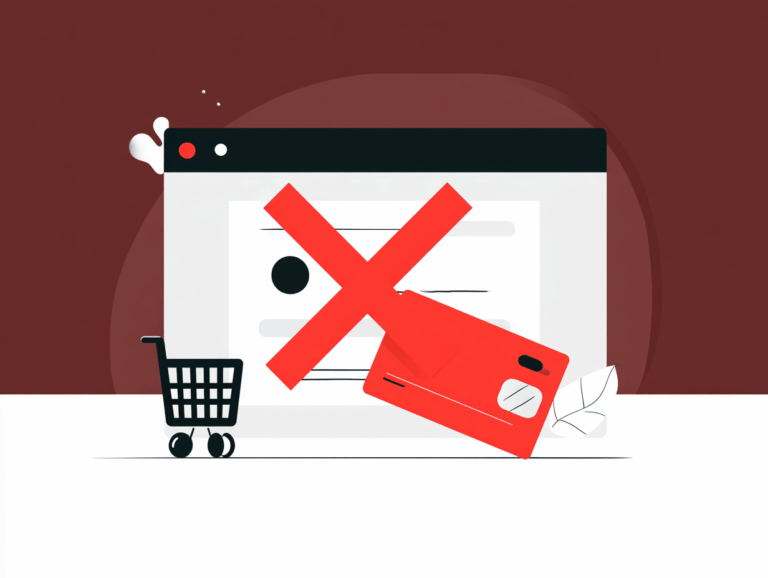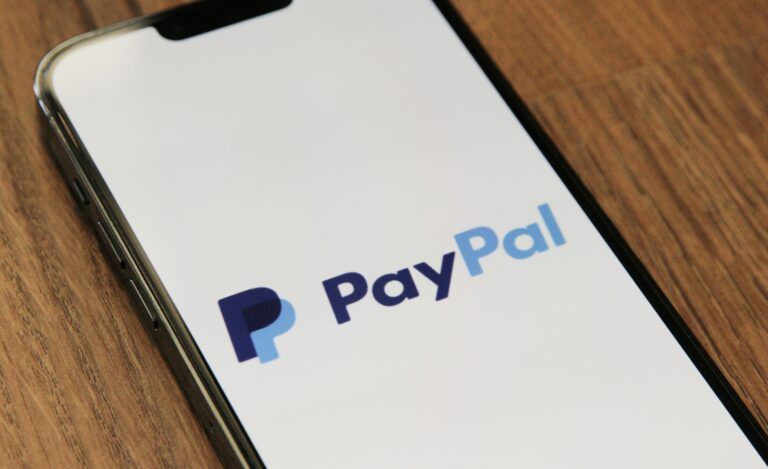Customer churn is an ever-present challenge that can quickly erode your recurring revenue if left unchecked. Thankfully, we have revenue recovery methods to combat it.
By proactively monitoring your subscription data for churn risks, engaging with at-risk customers, and implementing tactics like dunning management, you can plug the leaks and keep more of your hard-earned revenue.
In this post, we’ll break down the key elements of a traditional revenue recovery approach and share some battle-tested techniques for minimizing involuntary churn and retaining more customers. Whether you’re just starting out or looking to level up your churn mitigation game, these proven strategies can help you build a more resilient recurring revenue stream.
High churn rate? DirectPayNet can help!
1. Proactively Monitor Churn Patterns
One of the most effective ways to get ahead of churn is to proactively monitor your subscription data for common churn patterns and risk factors. By regularly analyzing your customer data, you can spot red flags early and take action before at-risk accounts slip away.
Some key churn indicators to watch for include:
- Plan type: Are customers on certain plans or price points churning at higher rates than others? If so, those plans may not be delivering enough value.
- Billing frequency: Monitor churn rates for monthly vs annual subscribers. Higher churn on monthly plans could indicate a need to incentivize longer-term commitments.
- Customer segment: Break down your churn rates by customer segment, company size, or industry. Look for patterns showing which types of customers are more likely to churn.
- Product usage: Low product usage or engagement is one of the biggest churn predictors. Track login activity and feature adoption to identify accounts at risk of churning.
- Support interactions: Analyze trends in customer support tickets and interactions. A spike in complaints or bug reports could foreshadow an uptick in churn.
The key is to look for signals in the data that certain customers are becoming less engaged and satisfied over time. By monitoring these leading indicators, you can proactively intervene with at-risk accounts before they churn.
2. Implement Robust Data Tracking and Reporting
You can’t manage what you don’t measure, so it’s critical to invest in tools that consistently track your most important subscription metrics.
At a minimum, your reporting dashboard should include:
- Monthly Recurring Revenue (MRR): The total amount of predictable revenue you expect to receive on a monthly basis. Monitoring MRR trends can alert you to potential churn issues.
- Churn Rate: The percentage of subscribers who cancel in a given period. Track both customer churn (# of customers lost) and revenue churn (% of revenue lost).
- Lifetime Value (LTV): The average revenue you expect to generate from a customer over their lifetime. Use LTV to prioritize high-value customers for retention efforts.
- Customer Acquisition Cost (CAC): How much it costs to acquire each new customer. If churn spikes, you may need to adjust CAC to maintain profitability.
- Customer Engagement Score: Create an engagement score that measures product usage, support interactions, and other key activity metrics. A sudden drop in engagement can be an early churn warning sign.
Beyond just tracking these metrics, the real value comes from the insights you can glean from the data. Analyze your subscription data for trends, patterns, and anomalies that could indicate churn risks or revenue recovery opportunities.
For example, let’s say you notice a sudden dip in MRR one month. By digging into the data, you discover that churn spiked 10% for customers on a specific legacy plan. With this insight, you could launch a targeted campaign to migrate those customers to a newer plan with better retention.
To take your reporting to the next level, set up automated alerts to notify you when key metrics fall outside of predefined thresholds. For instance, if your churn rate exceeds 5% or your MRR drops by more than 10%, you’ll get an immediate alert so you can investigate and take action.
Take control of your subscription data.
3. Keep a Close Eye on Expiring Credit Cards
Credit card expirations are one of the leading causes of involuntary churn for SaaS and subscription businesses. Most credit cards expire every three years, so there’s a good chance that some of your customers’ cards will expire during their subscription lifecycle.
When a customer’s credit card expires, their automatic subscription renewal will fail, leading to an interruption in service and potential churn if the issue isn’t resolved quickly. In fact, expired credit cards can account for 20-40% of total churn.
To get ahead of this problem, you need to proactively monitor your customers’ credit cards that are approaching expiration. Your subscription management or billing system should allow you to easily see which cards are expiring soon.
Once you identify cards that will expire in the next 30-60 days, reach out to those customers to remind them to update their payment information. Send them a friendly email explaining that their credit card on file will expire soon and their service may be interrupted if they don’t take action.
Make the process as easy as possible by including a direct link for them to update their card details. You can even incentivize them with a small discount or bonus for updating their information before the card expires.
If a card does expire before it gets updated, immediately notify the customer that their latest payment failed and their subscription is on hold until they provide a new payment method. Use dunning emails and in-app notifications to get their attention and bring them back.
But here’s an easier AND better solution: Automated card updater services can also help by automatically retrieving customers’ new card details from participating issuers. Visa and Mastercard both have automated card updaters that’s a cinch to set up.
4. Leverage Dunning Management Techniques
When a payment fails or a credit card is declined, don’t just write it off as lost revenue. Implement an automated dunning management process to systematically re-attempt billing the customer and recover those payments.
Dunning refers to the process of methodically communicating with customers to collect overdue payments. An effective dunning system combines automated payment retries with strategic customer messaging to bring delinquent accounts back into good standing.
Here are some key techniques to incorporate into your dunning management process:
- Automated retry schedule: Set up your billing system to automatically retry failed payments on a predefined schedule. A common cadence is to retry the payment 3-5 days after the initial failure, then again after 7 days, 14 days, and 30 days. Experiment to find the retry timing that maximizes recovery for your business.
- Intelligent retry logic: Use machine learning to analyze past payment data and optimize retry attempts. For example, retry a failed payment on the day of the month the customer typically gets paid. Or avoid retrying cards that were reported lost or stolen. Smarter retries boost recovery rates.
- Personalized dunning messages: Pair each retry attempt with an email notifying the customer of the issue and requesting they update their payment information. Personalize the messaging and subject lines to grab attention. Clearly explain the problem and provide a direct link for the customer to resolve it.
- Multichannel outreach: In addition to emails, engage customers through other channels like SMS, in-app notifications, or even manual phone calls for high-value accounts. A multichannel dunning strategy covers more bases and improves recovery odds.
- Flexible payment options: Make it easy for customers to get back on track by offering multiple ways to pay, such as a “Pay Now” button, option to switch payment methods, or ability to use digital wallets. The more frictionless the resolution process, the better.
5. Engage At-Risk Customers with Targeted Outreach
Even with a solid product and proactive customer success efforts, some customers will inevitably show signs of potential churn. They may decrease their usage, submit more support tickets, or express frustration in an NPS survey.
When you spot these red flags, it’s time to take a more hands-on approach. For your highest-value, at-risk customers, consider reaching out directly with personalized communication.
A well-timed phone call or email from a customer success manager or account executive could be just what’s needed to get the relationship back on track. This type of one-on-one outreach shows the customer that you value their business and are invested in their success.
During these interactions, aim to:
- Understand the root causes of the customer’s dissatisfaction or decreased engagement
- Empathize with their challenges and frustrations
- Offer solutions, additional training, or other resources to help them fully leverage your product
- Reinforce the value your solution provides and the ROI they’ve seen
- Discuss their goals and how you can continue to support them going forward
Of course, high-touch outreach isn’t always feasible for every at-risk customer, especially for high volume or low ACV products. In those cases, look for ways to automate personalized communication at scale.
You might set up an email campaign that triggers when certain churn indicators are detected, like a drop in usage or NPS score. The email content can be tailored based on the specific indicator and include relevant tips, resources, or offers to entice the customer to stay engaged.
The key is to intervene quickly when churn risks arise, showing the customer that you’re monitoring their success and are proactively working to keep them on board. Often, simply feeling heard and supported can be enough to turn a disengaged customer into a loyal one.
Utilize customer data to the fullest with the right CRM.
6. Offer Incentives and Promotions to Retain Customers
When you’ve identified customers at risk of churning, a well-timed incentive or promotion can be just the thing to convince them to stay. By offering a special discount, bonus, or loyalty reward, you’re showing the customer that you value their business and are willing to go the extra mile to keep them on board.
Some effective incentives and promotions to boost retention include:
- Discount on next renewal: Offer at-risk customers a percentage off their upcoming renewal. A 10-20% discount can be enough to sway them to commit to another term.
- Free month or upgrade: Provide a complimentary month of service or a temporary upgrade to a higher-tier plan. This gives customers a taste of extra value that could convince them to stay long-term.
- Bonus credits or usage: For usage-based plans, consider offering bonus credits or extra usage for a limited time. This can relieve the pressure of potential overage fees and give customers more flexibility.
- Loyalty points or rewards: If you have a loyalty or rewards program, consider giving at-risk customers a points bonus or special reward for sticking with you. This could be early access to new features, branded swag, or other exclusive perks.
The key is to make the incentive relevant and valuable to the individual customer. Analyze their usage patterns, support history, and feedback to craft a personalized offer that addresses their specific pain points or desires.
Also, consider the timing of when you present the incentive. Reaching out too early could leave money on the table, while waiting too long may be too late to change the customer’s mind. Experiment with different incentive windows, like 30, 15, or 5 days before renewal, to find the optimal point of contact.
7. Gather Feedback to Understand Why Customers Leave
No matter how proactive your churn prevention efforts are, you will inevitably lose some customers along the way. While it’s never fun to see a customer go, every lost account represents a valuable learning opportunity.
When a customer does churn, make it a priority to understand why they decided to leave. Exit surveys and well-designed cancellation flows can provide a wealth of insights into the factors driving customer churn.
Some key questions to ask in your churn surveys include:
- What was the primary reason you decided to cancel?
- How could we have improved your experience with our product/service?
- Did our product meet your expectations? If not, how did it fall short?
- Did you feel you received enough value for the price?
- How would you rate your experience with our customer support?
By asking targeted questions, you can uncover patterns and trends in the reasons customers are churning. Maybe your pricing is out of alignment with the perceived value. Perhaps a certain feature is buggy or not meeting expectations. Or it could be that response times from customer support are too slow.
The qualitative feedback you gather can inform your product roadmap, pricing strategy, support processes, and more. By letting your churned customers be your guide, you can make meaningful improvements to plug the holes in your retention bucket.
But the insights from exit surveys aren’t just about fixing what’s broken. They can also help you win back the customers you’ve lost.
For example, let’s say a customer indicated in their exit survey that they churned because they didn’t have time to properly implement your solution. You could reach back out after a month with a special “welcome back” discount and an offer for a white-glove onboarding service to help them get up and running quickly.
Or if a customer cited a missing feature as their reason for leaving, you can add them to a nurture campaign to let them know once that feature is available (assuming it aligns with your roadmap).
The key is to treat every piece of churn feedback as an actionable insight rather than an unfortunate data point. By striving to truly understand and address the underlying reasons customers are leaving, you can prevent future churn and even bring some churned customers back into the fold.
How’s your reputation? DirectPayNet can help boost it.
8. Analyze Churn by Cohort to Uncover Insights
Churn is not a monolith. The reasons customers churn and their likelihood of churning can vary significantly based on factors like how they were acquired, what plan they’re on, how long they’ve been a customer, and more.
To truly understand the nuances of churn in your business, it’s essential to analyze churn rates and reasons through the lens of customer cohorts. By segmenting your churned customers into groups based on common characteristics, you can uncover insights that would be lost in aggregate data.
Some key cohorts to analyze for churn insights include:
- Acquisition Channel: Do customers acquired through certain marketing channels (e.g. paid search, affiliate, organic) churn at higher rates than others? This could indicate misaligned messaging or targeting in certain channels.
- Pricing Plan: Is churn higher for certain payment plans or package levels? Perhaps your entry-level plan doesn’t provide enough value, or your top-tier plan is priced too high for the features.
- Customer Tenure: Do you see churn spikes at certain points in the customer lifecycle, like right after onboarding or around the one-year mark? This could signal a need to improve the onboarding experience or introduce a loyalty program.
- Product Usage: Are customers who engage with the product less frequently or only use certain features more likely to churn? Low usage could be a leading indicator that intervention is needed.
- Customer Persona: Is churn higher for certain types of customers, like small businesses or enterprise accounts? There may be an opportunity to tailor your product, pricing, or support to better serve those segments.
By comparing churn rates across cohorts, you can identify the groups that are most at-risk and dig deeper into the underlying reasons. For example, if you find that churn is significantly higher for customers on monthly plans, you might consider introducing a quarterly or annual option to increase retention.
Cohort analysis can also help you prioritize your retention efforts. If you see that high-value enterprise customers are churning at a higher rate, it may be worth investing more resources into proactive outreach and success management for those accounts.
To take your cohort analysis to the next level, layer in the qualitative feedback you’ve gathered from exit surveys. Look for patterns in the reasons customers in each cohort are churning. You may find that customers acquired through a certain channel consistently cite pricing as their reason for leaving, while those in another cohort churn due to lack of features.
By combining quantitative cohort data with qualitative feedback, you can paint a more complete picture of the churn dynamics in your business.
9. Experiment with Different Recovery Tactics
When it comes to reducing churn and recovering revenue, there is no one-size-fits-all approach. What works for one business may fall flat for another. That’s why you should aim to continuously experiment with different churn management and revenue recovery tactics to find what resonates best with your unique customer base.
Some key areas to experiment with include:
- Dunning cadences: Test different retry schedules and frequencies to optimize for recovery rates. Try extending or shortening the intervals between retries, or adding an extra retry attempt for high-value customers.
- Payment retry logic: Experiment with different retry rules based on the reason for decline. For example, if a card is declined due to insufficient funds, retry the online payment on a different day of the week or time of day.
- Incentives and promotions: Test different types of incentives (e.g. discounts, upgrades, loyalty rewards) and promotional windows (e.g. 30 days before renewal vs. 5 days) to see what most effectively retains at-risk customers.
- Messaging and subject lines: Experiment with different messaging angles and subject lines in your dunning and win-back emails. Test more urgent vs. more empathetic copy, or highlight different value propositions to see what drives the most engagement.
- Multichannel outreach: Test reaching out to delinquent customers through different channels like SMS, in-app notifications, or direct mail in addition to email. Find the right channel mix for your audience.
- Cancellation flows: Experiment with different salvage offers, surveys, and messaging in your cancellation flow to see what convinces customers to stay. Test the impact of adding a “pause subscription” option or surfacing a relevant help doc.
Take a scientific approach to your experiments. Start by forming a hypothesis about what you think will improve recovery rates. Then, set up a controlled test where you change one variable at a time and measure the impact on your key metrics.
10. Learn, Iterate and Optimize Your Processes
Revenue recovery is not a “set it and forget it” endeavor. It’s an ongoing process that requires continuous learning, iteration, and optimization. The most successful subscription businesses treat churn management as a core competency and are always looking for ways to improve their processes and results.
Here are some key ways to build a culture of continuous improvement around revenue recovery:
- Regularly review your subscription data: At least once a quarter, dive deep into your subscription analytics to identify trends, patterns, and opportunities for improvement. Look at metrics like churn rate, recovery rate, and customer lifetime value across different segments and cohorts. Use this data to inform your churn management strategy and prioritization.
- A/B test your dunning tactics: Experiment with different retry schedules, email copy, subject lines, and offer types to see what drives the best recovery rates. Test one variable at a time and let each experiment run long enough to reach statistical significance. Document your results and use them to continuously hone your dunning strategy.
- Gather feedback from churned customers: Follow up with lost customers to understand why they left and what could have convinced them to stay. Use exit surveys, phone interviews, or personalized emails to gather this valuable intel. Look for common themes and actionable insights you can use to plug the holes in your retention bucket.
- Stay on top of industry benchmarks: Keep tabs on average churn and recovery rates in your industry using resources like the KeyBanc SaaS Survey or Pacific Crest SaaS Survey. Understand how your performance stacks up to your peers and use that as motivation to continuously improve. Attend industry events and network with other subscription businesses to swap best practices.
- Invest in your team’s skills: Provide ongoing training and development opportunities for the team members responsible for churn management and revenue recovery. Keep their skills sharp and up-to-date on the latest tactics, tools, and best practices. The more equipped your team is, the better results they’ll be able to drive.
- Leverage AI and machine learning: Take advantage of AI-powered tools to continuously optimize your churn management processes. Solutions like ProfitWell Retain use machine learning to predict churn risk and optimize retry logic in real-time. The more data these tools ingest, the smarter they become at maximizing recovery rates.
You’ll never have a perfect churn management process, and that’s okay. What matters is that you’re always learning, experimenting, and striving to improve.
Every lost customer is an opportunity to tighten up your retention strategy. Every successful recovery is a chance to double down on what’s working. By making continuous improvement a core part of your revenue recovery discipline, you’ll be able to stay one step ahead of churn and keep more of your hard-earned revenue.
Small tweaks and optimizations may not seem like much in isolation, but compounded over time, they can have a major impact on your bottom line. So keep pushing forward, stay curious, and never stop optimizing. Your subscription revenue depends on it.









